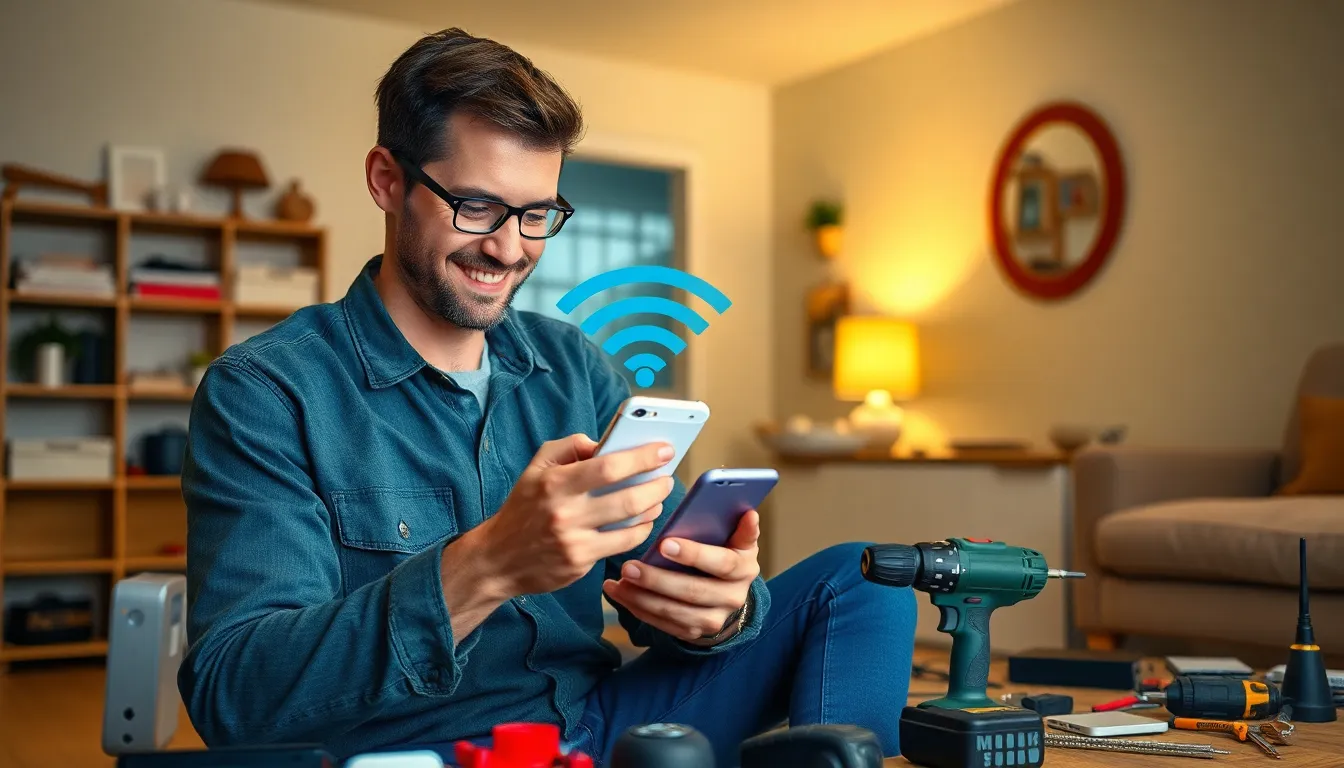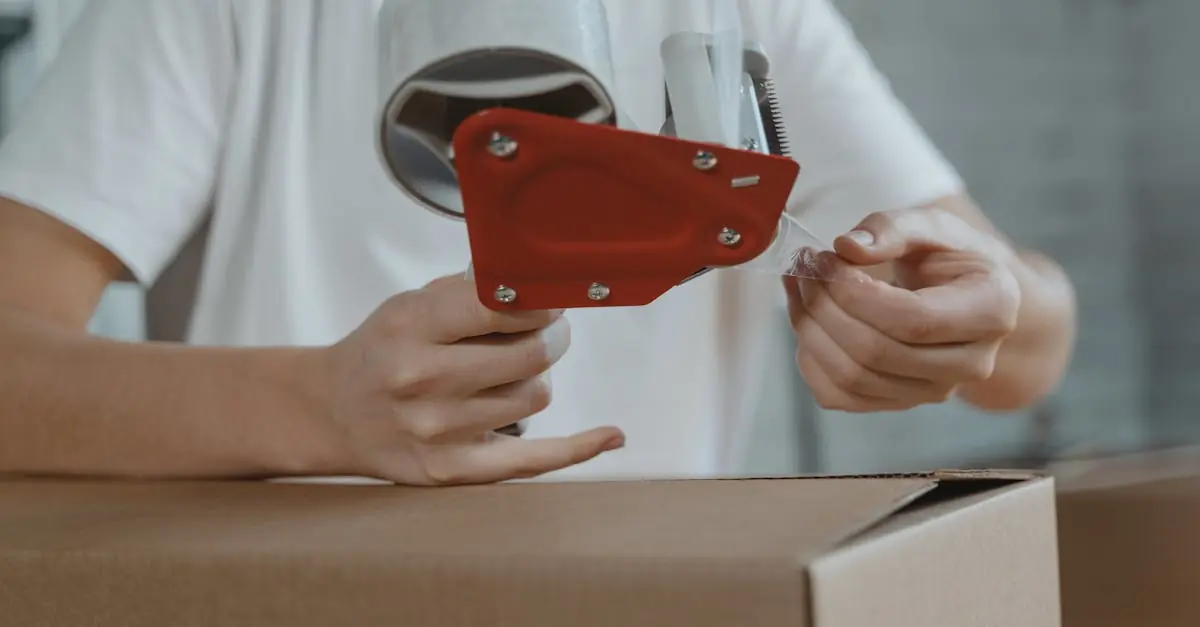In today’s tech-savvy world, smart devices are no longer just for the elite. They’re transforming homes into futuristic havens where even your toaster might have a better social life than you! But let’s face it: installing these gadgets can feel like trying to assemble IKEA furniture without the instructions.
Table of Contents
ToggleOverview Of Smart Device Installation
Smart device installation enhances home functionality, providing convenience and automation. Proper setup significantly improves the user experience.
Benefits Of Installing Smart Devices
Time savings emerge as a primary benefit. Smart devices streamline daily tasks, allowing individuals to focus on other priorities. Energy efficiency plays a crucial role in reducing utility bills. Smart lighting and thermostats adjust according to user habits, optimizing energy usage. Security features also increase peace of mind; smart cameras and doorbells offer remote monitoring options. Integration with voice assistants simplifies control, enabling hands-free operation. Overall, benefits contribute to a modern lifestyle, enhancing comfort and convenience in everyday routines.
Common Smart Devices To Install
Smart speakers rank among the most popular options, serving as central nodes for voice control. Smart thermostats help manage heating and cooling, increasing energy efficiency at home. Security cameras monitor properties, providing real-time alerts and video access. Smart doorbells enhance entryway security by notifying users of visitors. Smart lighting systems allow remote and automated control of lighting, improving ambiance. Additionally, automated plugs enable traditional devices to operate smartly, bridging the gap between old and new technology. These devices represent only a fraction of what is available for installation in a modern home.
Preparation For Installation
Preparing for smart device installation ensures a smooth setup process. Proper assessment of compatibility and having the right tools simplifies the task significantly.
Assessing Your Home’s Compatibility
Determining the compatibility of smart devices with existing systems is crucial. He or she can check Wi-Fi signal strength, ensuring reliable connectivity for devices that depend on the internet. Smart devices require specific operating systems and protocols; reviewing device requirements aligns with home infrastructure. Older homes may need updates to support newer technology, such as wiring for smart lighting or thermostats. Reviewing app requirements assists in confirming compatibility with smartphones or tablets.
Tools Required For Installation
Gathering the necessary tools can expedite installation. Basic tools include screwdrivers, a drill for mounting, and a level for accurate placement. Using a smartphone for installation apps and guidance facilitates setup. Additionally, tape measures ensure precise measurements for device placement. Many installations benefit from pliers or wire strippers, especially when connecting wired devices. Keeping a step ladder handy provides access to higher installations, such as cameras or lighting systems. Having these tools ready avoids delays and ensures a successful setup.
Step-By-Step Installation Guide
Follow this guide to ensure smooth installation of smart devices, enhancing your home’s functionality and user experience.
Installing Smart Thermostats
Begin with shutting off the HVAC system to prevent electrical hazards. Remove the existing thermostat from the wall, noting wire connections. Use a smartphone app for compatibility checks; many thermostats offer easy setup guides. Connect the wires to the new thermostat, ensuring the correct terminals are used. Once mounted, turn the HVAC system back on and follow the app instructions for configuration.
Setting Up Smart Lights
Start by choosing the right smart bulbs for your home fixtures; compatibility matters. Turn off the power at the circuit breaker before proceeding. Replace standard bulbs with smart bulbs, ensuring they’re securely fitted in sockets. Restore power and open the corresponding app to connect the lights via Wi-Fi. Customization options allow for setting schedules and dimming preferences for every bulb.
Configuring Smart Security Systems
Choose strategic locations for security cameras and sensors, ensuring comprehensive coverage. Begin installation by marking spots for mounting devices. Connect sensors and cameras to the Wi-Fi network using their respective apps. Test each device to confirm functionality, inspecting the app for alert settings. Program alerts according to individual security preferences to enhance home protection.
Troubleshooting Installation Issues
Installation issues can arise during the setup of smart devices. Identifying common problems and knowing when to seek professional help can ensure a smoother experience.
Common Problems And Solutions
Wi-Fi connectivity issues frequently occur. Ensure the smart device is within range and that the router is functioning. Device compatibility is another common hurdle. Verify that the smart device works with existing systems before starting installation. Inadequate power supply might also lead to problems. Check that outlets are operational and adequate for the device’s requirements. App malfunctions can hinder setup too. Restarting the app or the device can often resolve these glitches. Additionally, improper configurations can create frustration. Following manufacturer instructions step-by-step minimizes errors during setup.
When To Seek Professional Help
Seeking professional help can be beneficial in specific scenarios. Complicated wiring or system integration often requires expert assistance. Homeowners might face challenges with older electrical systems. These systems may not support newer smart devices without upgrades. Troubleshooting steps can alleviate some issues; however, some problems exceed essential DIY fixes. When time constraints exist and patience runs thin, hiring a professional might save effort. Owners unfamiliar with tech setups should also consider expert assistance for streamlined installation. Ultimately, investing in professional help can ensure devices function optimally.
Conclusion
Smart device installation can transform a home into a more efficient and secure environment. By ensuring compatibility and preparing adequately, homeowners can simplify the process and enjoy the benefits of modern technology. From enhanced energy efficiency to improved security, the right setup makes daily life easier and more convenient.
When challenges arise, troubleshooting and following manufacturer guidelines can often resolve issues. If the installation proves too complex, seeking professional assistance is a wise choice to guarantee optimal functionality. Embracing smart devices not only modernizes living spaces but also enhances the overall quality of life, making it a worthwhile investment for any homeowner.







